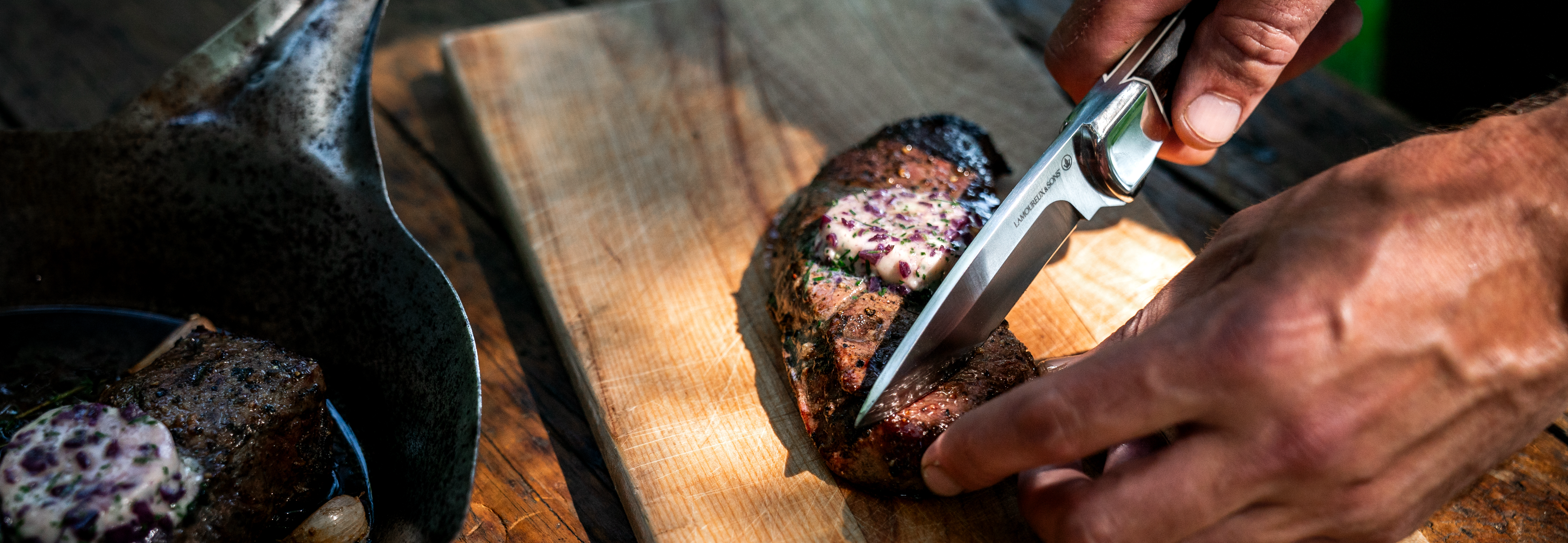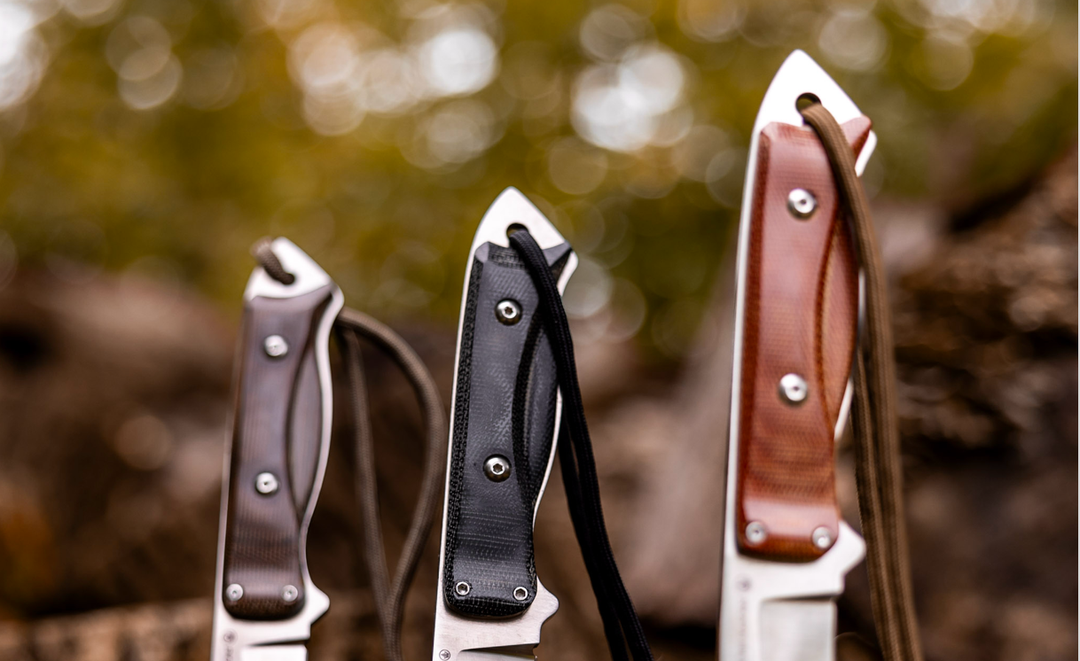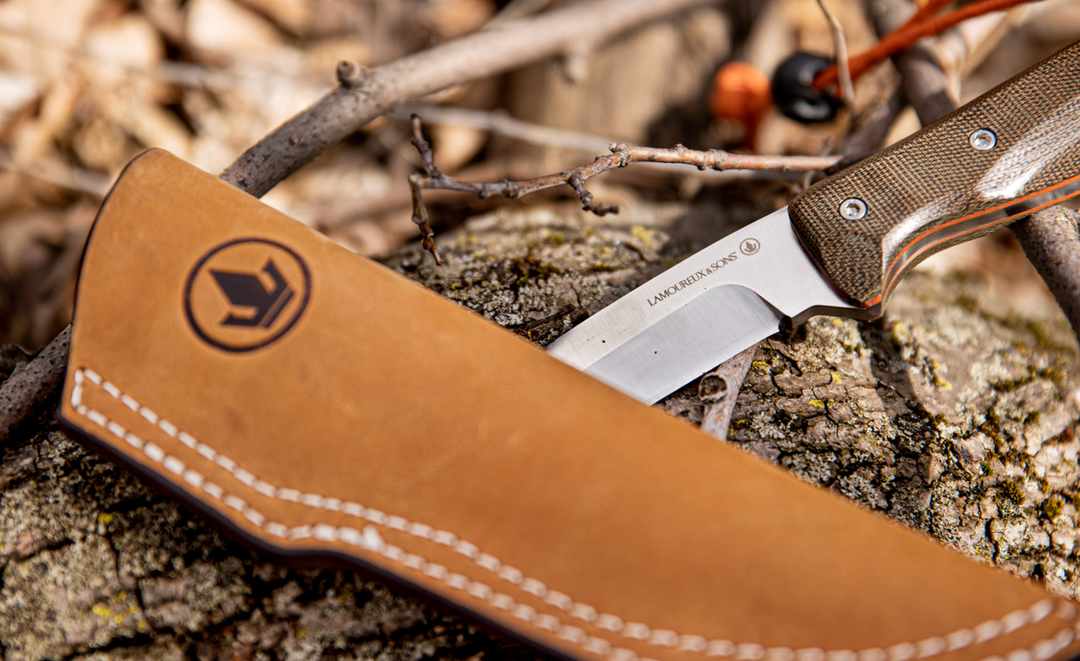A Lamoureux & Sons knife requires minimal maintenance to prolong its efficiency and life. The blade is made of high-end stainless steel, CPM-S30V which is very resistant and maintains its sharpness.
Regular maintenance
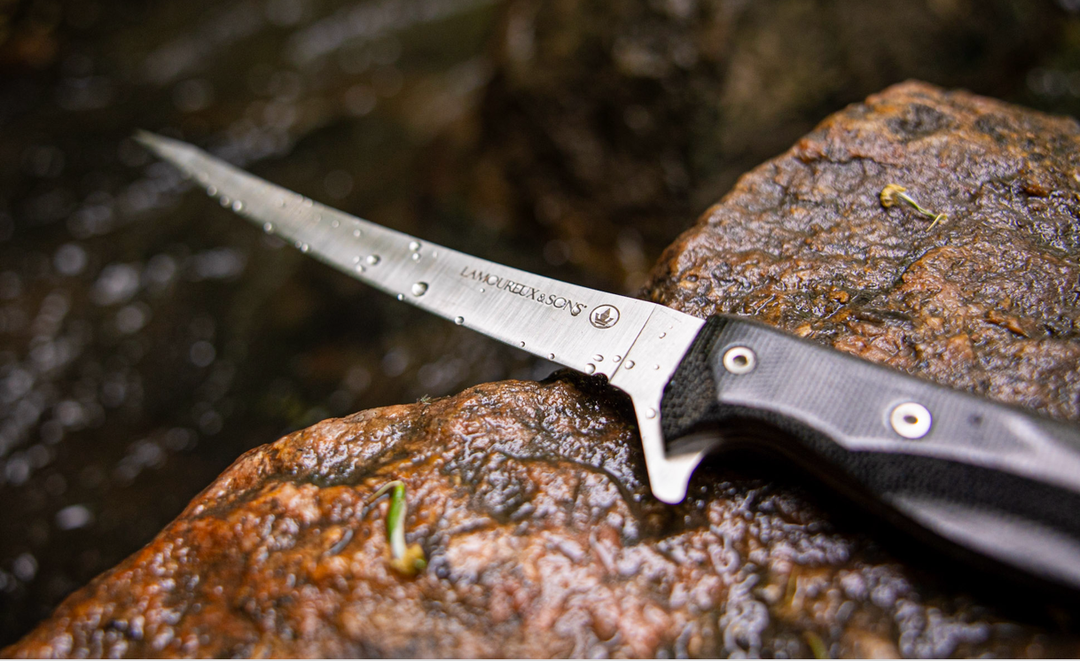
Blade maintenance
After each use, wash the blade with a soft, damp cloth and then wipe it immediately to dry it thoroughly. Light oxidation may be noticed and even slight traces of rust in case of poor maintenance. In these cases you can use polishing products available in hardware stores.
Handle maintenance
We mainly work with stable exotic woods such as Ebony, Cocobolo as well as Micarta and Deer Horn. You can wash the handle with lemon oil soap, use a soft, dry cloth to dry it well, then apply Lamoureux & Sons handle wax to preserve the luster and protect from moisture.
Leather case maintenance
We suggest applying Lamoureux & Sons Leather Case Wax, to keep the leather supple and waterproof, then wipe off excess with a soft cloth.
How to sharpen your knife
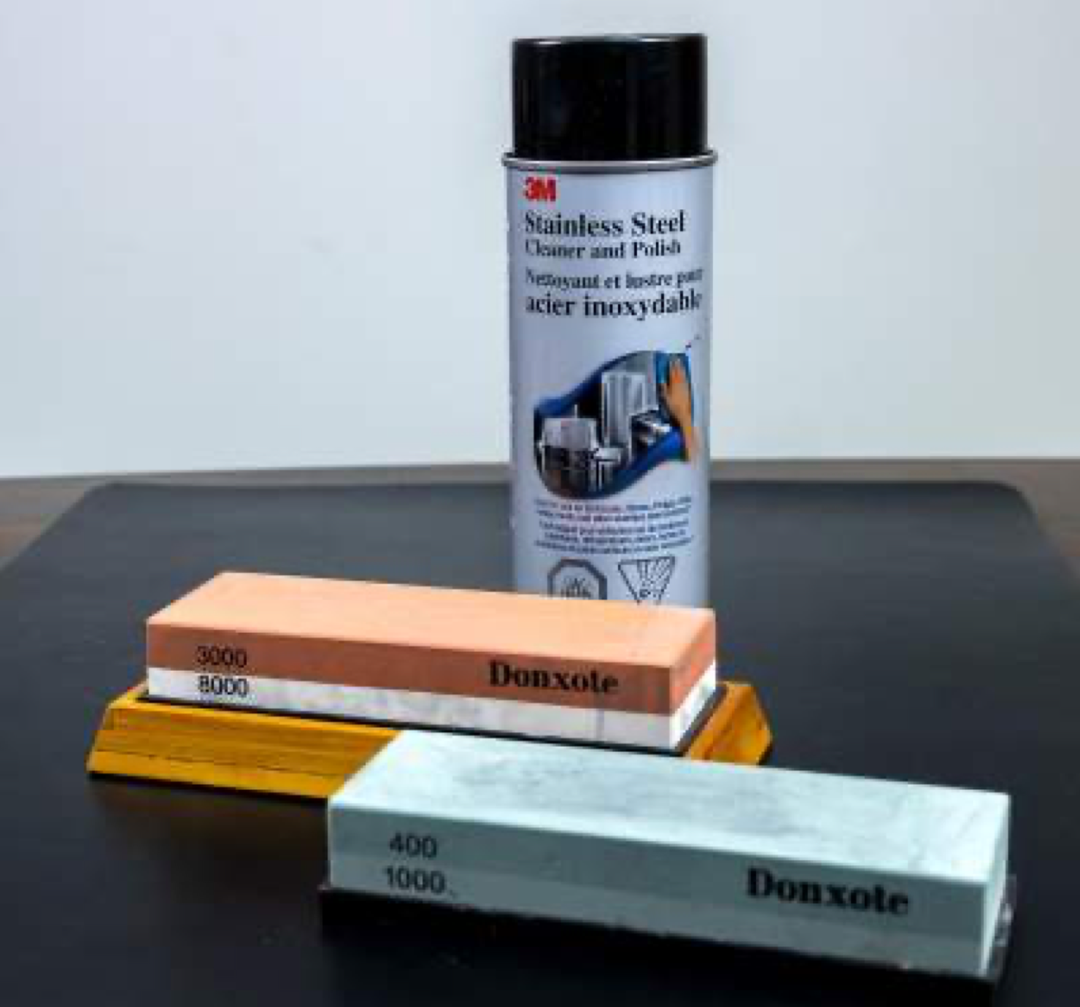
Prepare your equipment
We recommend using Japanese sharpening stones in combination with light vegetable sharpening oil. The oil serves to dissipate material deposits, thus keeping the stone clean, reducing heat and facilitating movements.
The Donxote stone set with grades of 400, 1000, 3000 and 8000 grains per inch is particularly effective.
The correct position
Always hold your knife by the handle with the sharp side away from you. Always place the blade on the stone with the edge angle between 20 and 25 degrees (as shown).
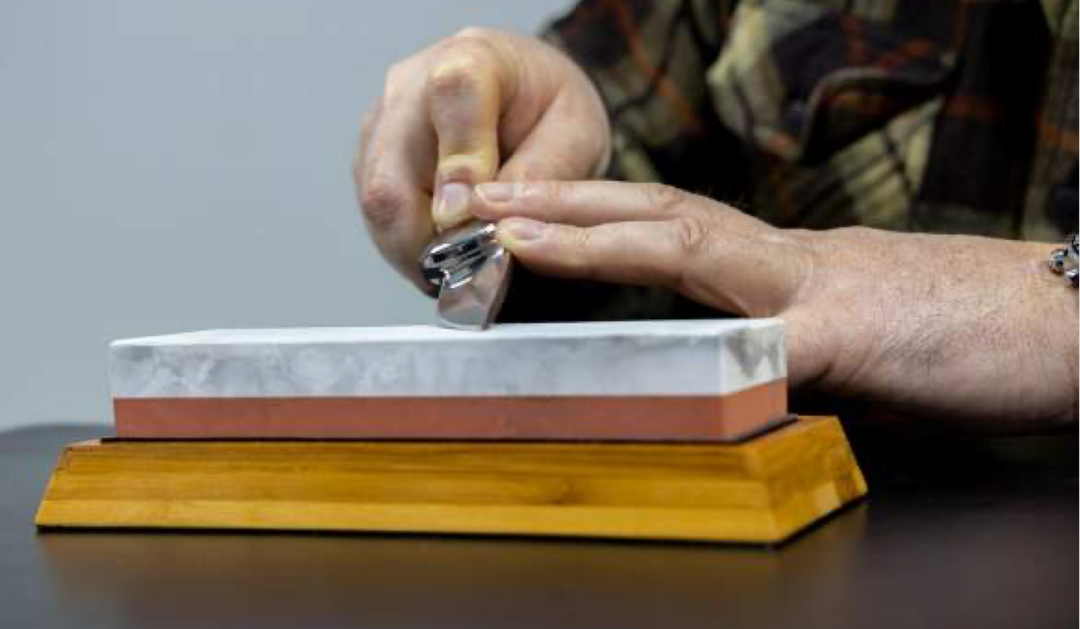
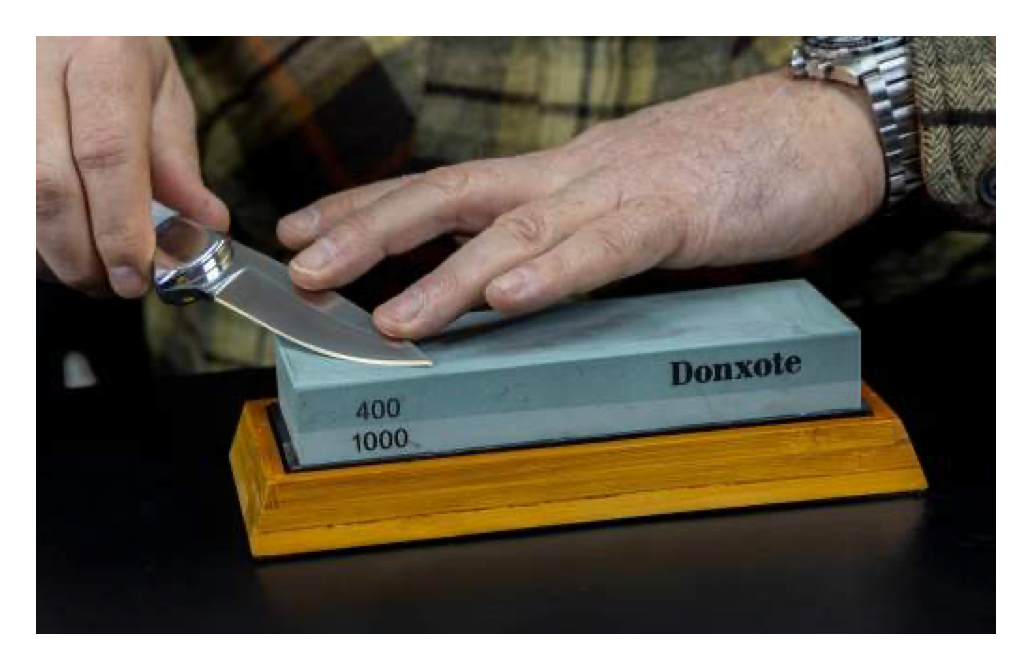
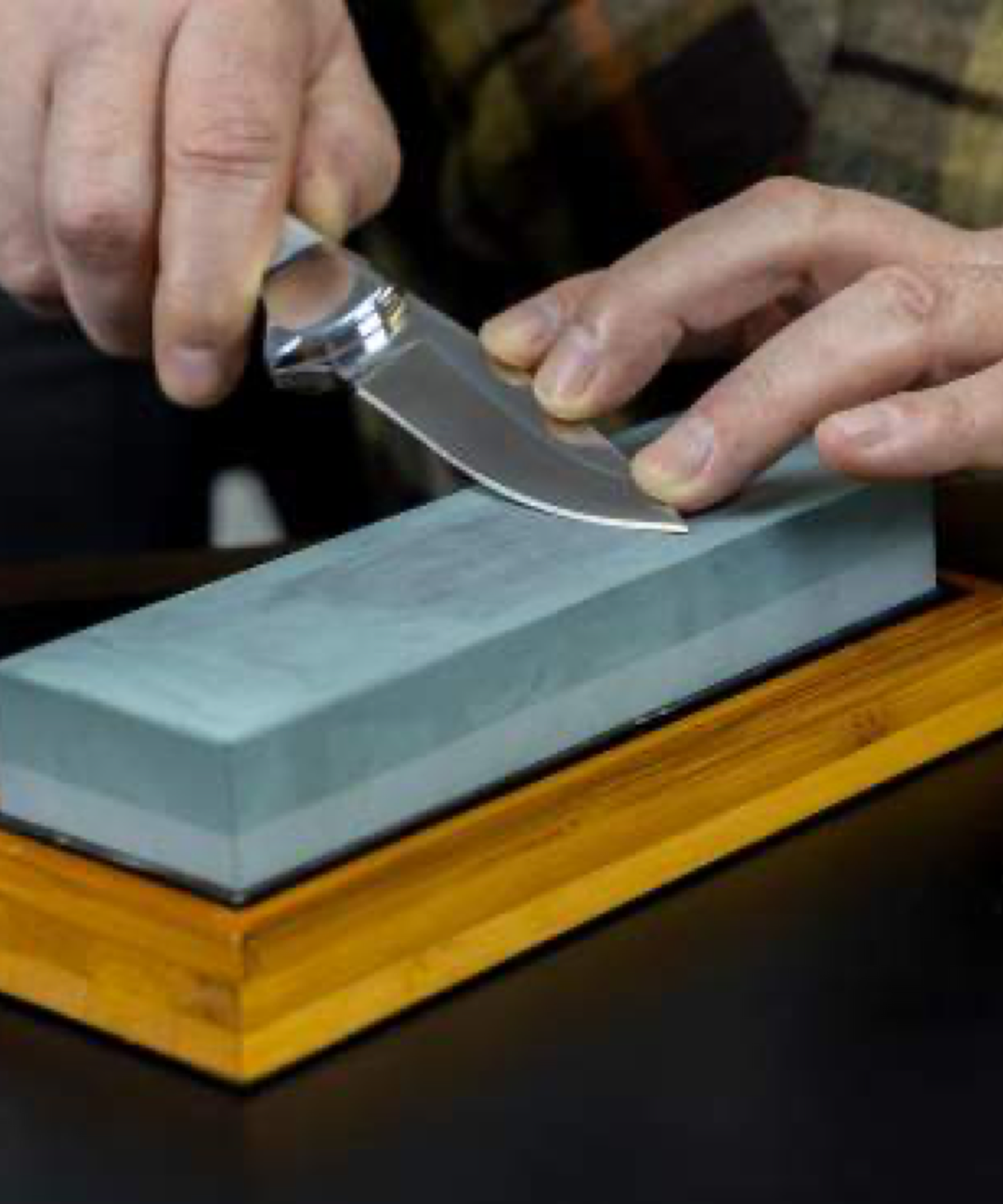
If your blade no longer cuts
Start with a coarse-grained natural stone (between 400 and 600) and finish with a fine-grained natural stone (between 800 and 1000).
Make forward pushing movements. At the end of this movement; you must raise the blade so that it does not touch the stone and bring the blade back to the starting position.
For the other side of the blade; push towards you using the same method of movement, always applying medium force to the blade. Too much force will damage the stone and you will have a solid deposit of material on the edge of the blade. About a dozen passes will be necessary for each part of the blade, i.e. the cutting edge, the leader and the point.
Then turn your stone 90 degrees and repeat the operation in this direction. Always keep your stone moist with oil, avoiding too much accumulation of oil.
Always push in a smooth, steady motion across the entire length of the stone, making sure to keep the entire surface of your blade in contact with the stone.
Move up to the next grade of stone and repeat the same operation to refine your sharpening more and more.
For a blade requiring fine or touch-up sharpening
Start right away with a fine-grained natural stone (between 1000 and 3000).
Make gentle forward pushing movements. At the end of this movement; you must raise the blade so that it does not touch the stone and return the blade to the starting position.
For the other side of the blade; push towards you using the same method of movement, always applying medium force to the blade. Too much force will damage the stone and you will have a solid deposit of material on the edge of the blade. About ten passes will be necessary for each part of the blade, i.e. the cutting edge, the start and the point.
Then turn your stone 90 degrees and repeat the operation in this direction. Always keep your stone moist with oil, avoiding too much accumulation of oil.
Always push in a smooth, steady motion across the entire length of the stone, making sure to keep the entire surface of your blade in contact with the stone.
Move up to the next grade of stone and repeat the same operation to refine your sharpening more and more.
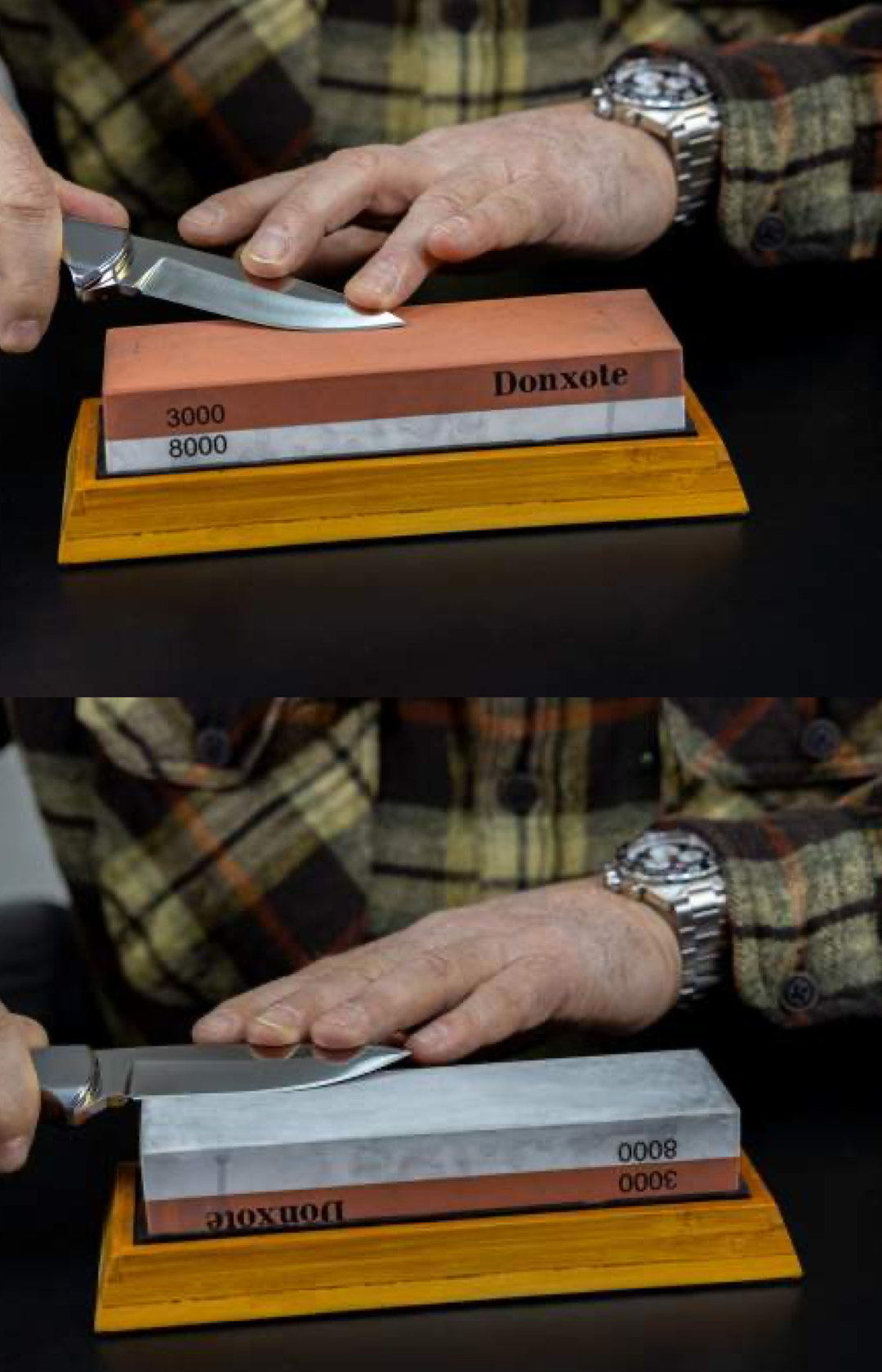
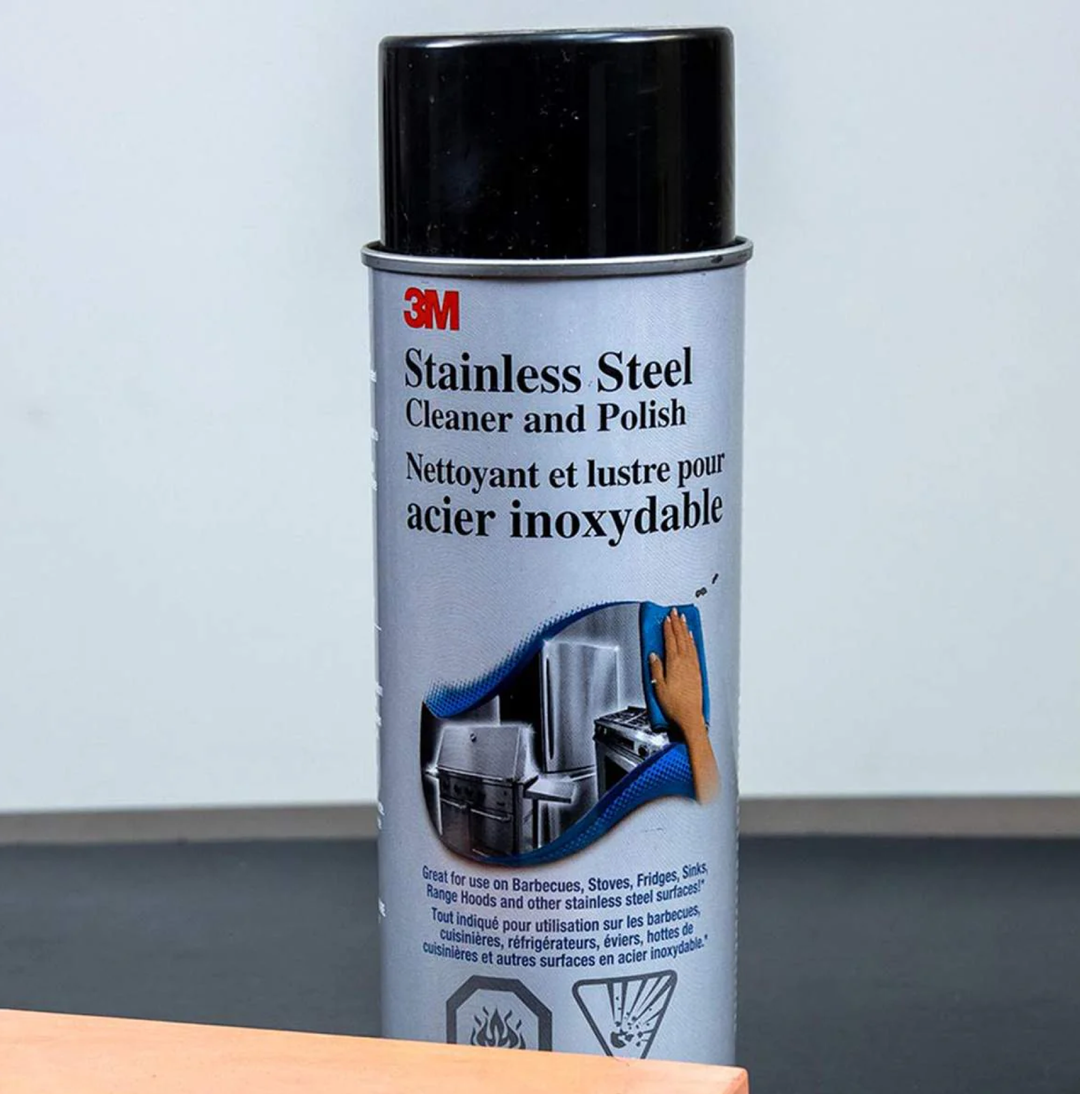
Occasional cleaning
If your blade has lost its shine, is stained, or simply needs a deep cleaning, you can clean it with Stainless Steel Cleaner and Polish and a soft cotton cloth. This will loosen and remove any tiny deposits that have accumulated on your blade.
Spray the cleaner onto your cloth, never directly onto the blade. Then wipe the blade with the cloth using a gentle, even motion along the entire length of the blade.


